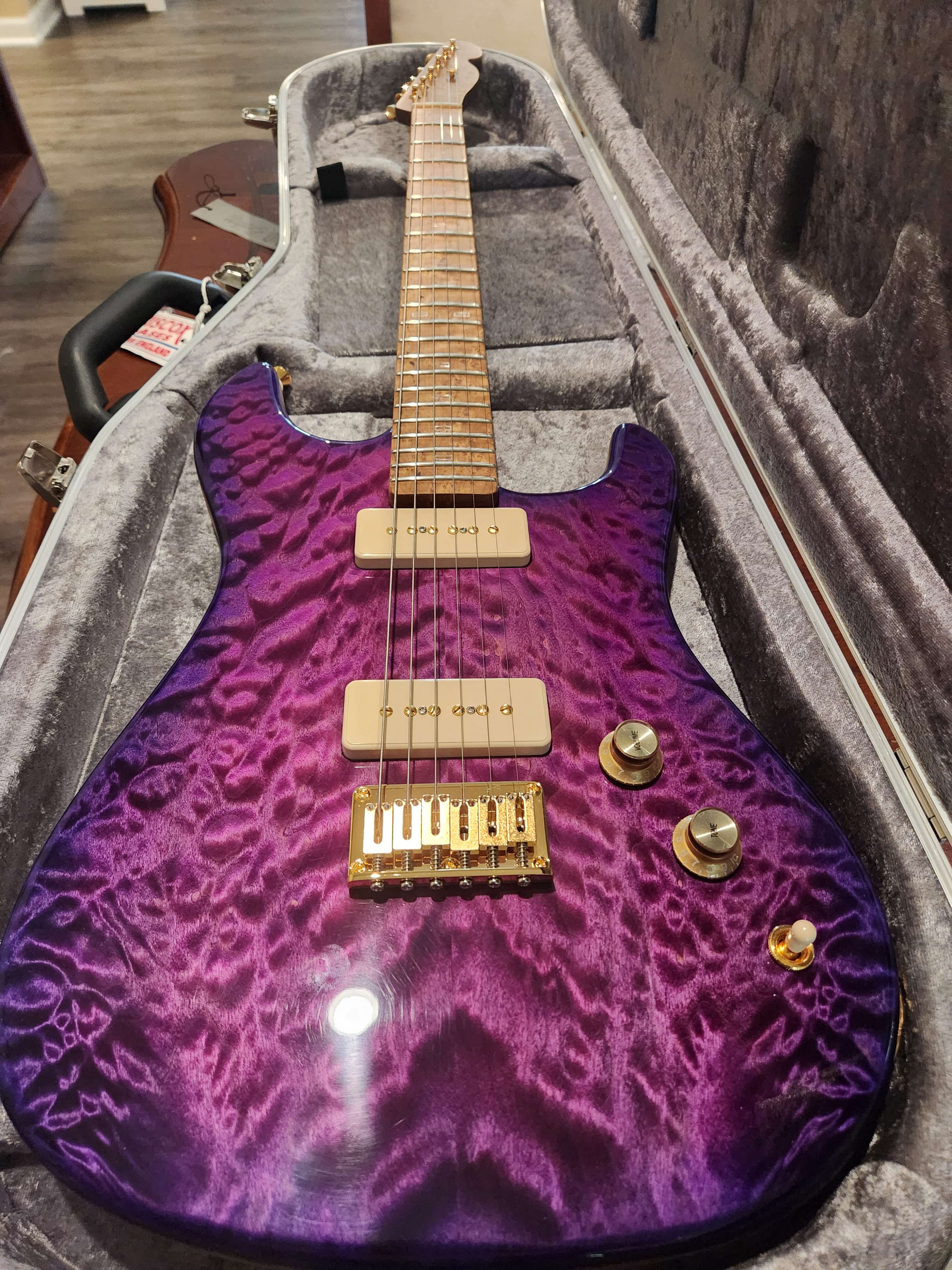By commercialism, I’m aiming at a mix of spending a lot and sifting through bloated business models (e.g. this or that accessory/equipment, microtransactions, etc.). Feel like many can relate to this sort of commercial fatigue, and yet it creeps even into hobbies where one tries to unwind.
Lately I’ve picked up reading more again, as thanks to libraries I’m able to do just that, but I’m wondering what some other, less obvious options* might be.
*
This is mainly for the going outside, walking folks. I enjoy a good walk from time to time, but I’m interested in activities that are a little less obvious.
Playing and studying chess, on www.lichess.org. It’s a free open source alternative to the heavily commercial chess dot com.
Learning a new language. Tons of free resources all over the internet
Learning card magic. You can go a long way with just a pack of cards and the 52Kards YouTube channel
Learning to play music. Tons of free resources all over the internet
Learning card magic. You can go a long way with just a pack of cards and the 52Kards YouTube channel
I’ll have to give that a look! I’ve been trying to get better at some different card shuffles, as it’s both practical and fun to do.
Just be careful to learn card magic and not magic cards. Because one of those is not good for minimizing your consumption haha
How about collecting & watching pirated TV shows off the internet?
That’s not a hobby. That’s a way of life!
YAARRRRR!
Hiking.
You can do it on trail mix and tap water. All you really need is a good pair of shoes.
Hiking is great. Swimming (assuming you live near a safe body of water) can be very cheap. Simple sports like basketball and soccer are popular globally because you need basically anything round that bounces a bit and can play or practice some variant.
I think overall, any sport or activity can be expensive if you buy the bullshit that x equipment or y must have variant is the best and will increase your enjoyment. Videogames can be crazy cheap and simple considering entertainment time vs. cost but you need to be somewhat aware of the model you are playing in…and basically know how to download good stuff. Cooking can be expensive if you’re trying to emulate bullshit social apps that tell you to follow this expensive trend or you have to eat a certain food this way, but I think learning to cook and prepare in your price range is incredibly satisfying. Spend the same but it’s massively improved quality.
Reading and learning is often free through libraries and provides many benefits.
Yeah but some sports, the costs are pretty unavoidable. Like skiing, snowboarding, golfing, etc.
Lots of maker type hobbies do require an initial (and often ongoing) material purchase. Some are better than others at using what is at hand though.
Sewing/alterations is both a useful skill to have and allows you to repurpose old fabrics.
Art supplies can be quite expensive, but drawing materials are fairly ubiquitous. You likely have something within reach that you can practice with.
Recently I’ve taken to self hosting. It started with me just wanting a raspberry pi for pi-hole and has developed into a full hobby. Because so many of these services are FOSS and can run on a toaster it’s helped me immensely with avoiding commercial fatigue. I also find that the communities for the hobby are insightful and, because the solutions are free, they aren’t selling you on a product. They’re just passionate about the service, distro, or setup that they use.
I’ve also learned a ton of applicable skills for adult life, so happy side-effects.
What do you recommend hosting because oddly enough I already want a server but I don’t know what to host. I feel it’s such a waste to burn electricity just to produce heat since using electricity in any capacity produces heat so I would literally use my server as a space heater.
I thought of hosting a Minecraft server for friends (or even friends of friends) and folding @ home as well. I already have a computer much better suited for file hosting so I would not need more of that.
What will you be hosting on? I started with a raspberry pi. It was important to me to host on something outside my main machine. I chose the pi because it would run linux, use very little electricity, and would remain out of the way.
Initially it was for pi-hole. Which is a network wide DNS filter used to block ads (with some exceptions like YT). That got me more interested in my own privacy. So, I added a searx instance to my pi. It’s an aggregate search engine that searches a bunch of search engines and won’t track me. Or at least I’m tracking myself.
I’ve never run a minecraft server on a pi but I have a friend who has. It was fine for up to about 4 people.
From there I actually built a rig specifically for hosting. It’s a little more stout than the pi. On it I run Proxmox (which I use to create linux containers for the other things I host). I do run a file share on it. It’s nice because it’s easy to run weekly backups so I don’t lose things. I also run a vpn, qbittorrent (for linux isos), jackett (indexes torrents), sonarr (used to… find movies I’m missing), jellyfin (to watch said movies anywhere in the house) and finally I do host a valheim server there for my friend’s and I.
Honestly I would at least start with a dedicated machine for it, maybe an old laptop, a pi, just anything cheap that if you screw up you can wipe and start over. From there: pi hole, seaex, retro game box maybe? There’s really a lot of things you can host. Find a need you have a Google a linux solution for it. There’s almost always one.
I work as a computer repair technician and my workplace has some really old cheap (90$) server hardware for sale. They have 32gb of DDR3 and old dual xeon 5606. I would probably upgrade them because old xeons are dirt cheap. They also have some old workstations too that could be suitable for hosting, similar amounts of ram but new processors.
Not energy efficient but that’s fine since they would literally be a space heater, and if maxed out those old CPUs can still get some work done.
Honestly, that’s not bad for a start. That Xeon should be fine for most things. I run an amd 4650g pro and never get close to using it all.
Side Note: The people over at !selfhosted@lemmy.world have been immensely helpful for me in my brief journey so far.
Wood working. Whittling. You can buy very expensive tools or you can go old school and pick up used 100 year old ones for nothing or even make your own. You can buy wood or you can salvage it.
I agree tremendously. Additionally Japanese woodworking is pretty much devoid of commercialization entirely. Tools tend to be judged by their undeniable quality and the reputation of the blacksmith who forged it.
Additionally to avoid commercialization in western wood working (aside from buying vintage) is making a lot of your own tools. One of the most important rules in wood working is to buy tools that allow you to make more tools. So go ahead and buy some chisel blanks and make some handles, buy a vice screw and build your own leg vice (coincidentally the leg vice is almost extinct today due to commercialization of the cast iron vice, despite performing worse than the leg vice). Build your own bench, clamps (use some hardware kits) and if you have some guts you can cut your very own wooden planes and fit an aftermarket blade.
It’s a lot of work but it’s very rewarding and there is a tremendous amount of pride when using tools you make/restore yourself.
Many hobbies have some sort of cost associated, I would hope materials to do the hobby aren’t necessarily seen as negatives.
People have been doing HAM radio (and learning it), electronics tinkering, woodworking, fishing, etc for ages. There are upfront costs to get equipment, although used stuff abounds, ongoing costs are materials or components that one wants. For some things once you get it working you don’t necessarily have ongoing costs.
I see commercialism as exploitive, just purchasing things not so much.
I see commercialism as exploitive, just purchasing things not so much.
Yeah, to elaborate a little, the question’s more aimed at finding activities that aren’t actively trying to rope you into buying more and more to keep up. A couple classic examples of what I had in mind to avoid would probably be like a trading card game or some tabletop game with collectible(?) miniatures (not sure what those games are called), whereas with crafting hobbies it’s simply a necessity upon exhausting craft materials.
The amount of consumer pressure within ham radio can be larger than you think. HF rigs can go for thousands of dollars, with VHF/UHF gear up there too.
Yes there are a lot of far less expensive ways to enjoy amateur radio. And I really should get my too-long unused cheap rig out of storage and do some of them, like digital modes on a computer over HF or satellite with a homebrew antenna and my old analog HTs.
P.S. It’s ham not HAM. It has never been an acronym so it should never be capitalized. Ham radio at the beginning of a sentence just follows normal English language capitalization rules.
73 from now actually old and apparently grumpy OM
I sew my own clothing amongst other things and am generally crafty (woodworking, etc).
I don’t know if it’s possible to completely avoid consumerism (gotta buy the fabric, materials, etc) but it’s a lot easier to find things to repurpose. I have made clothing out of old bedsheets and curtains, for example. People repurpose pallet wood all the time as well.
I don’t sew, but a follow several people who do (for vintage and modern clothing) on Instagram - just to emotionally vampire off their irrepressible happiness when it all comes together and they make something that comes out as great as they imagined (lots of “and it has pockets!!!” moments) or they master a new skill they had been struggling with - like sewing button holes in denim or whatever.
It’s not for me, but I love the obvious satisfaction and joy other people are getting out of it.
Is there a way to get notified when people respond to a some else’s post?
Not yet but apparently it’s coming. Unfortunately for now you have to save it and check back manually
That’s going to be app specific. Not sure what apps do that but that’s how it would be
Get yourself a speed loom for $20 and some thread or embroidery floss, and you can darn socks! This was my pandemic “learn a new skill”, and now the whole family brings me socks with holes, to fix.
And the “best” part is that cheap socks wear out around the patch, so then you get to / have to darn them again!
Tutorial:
-
home cooking
-
sewing and making your own clothes
-
cycling
-
composing poetry
-
ethical philosophy
-
social dance
-
programming indie videogames
-
letter-writing
-
calligraphy, though this is borderline, as you can spend literally any amount of money on fancy pens and nice paper
Edit to add:
-
carpentry
-
hunting and fishing
-
volunteering
-
graffiti
Fountain pen user here, can confirm. Ink is a factor as well.
-
3d printing! A lot of the crap you buy you can make yourself for next to nothing. Also a lot of crap you have can be repaired in similar fashion.
Isn’t the 3D printer parts, accessories and maintenance just part of the commercialsm OP is trying to avoid?
(I want a 3D printer, by the way…)
Public library
Wait. You’re saying that public libraries have 3D printing services?
Yes, they do in my city. Also public universities. My local uni engineering dept will print for only the cost of filament.
Some of them in the US do. Or you could send the blueprints to China and they can ship it to you
3d printing, wood working and carpentry is the trifecta of self sufficiency. 3d printing to make complex or small parts, wood working to build furniture, shelves and tools and carpentry to repair most everything in your house, from basic plumbing, electrician work, timber framing and dry wall repair.
I’m currently working my way down the rabbit hole, no 3d printer yet but I have some experience in CAD. Really the only things I buy brand new are tools to build more tools/stuff lol.
Learn a new language using Language Transfer method!
Pay what you want, but the lessons are very well done and quite different than your textbook (no writing anything down at all). The teacher doesn’t push you to donate at all but I tell you it’s absolutely valuable and worth it.
I hand draw cards using dip pens, ink, brushes, or whatever media is interesting. It’s a nice way to spend time, and art shops have a fascinating array of niche products. There’s a bit of consumerism there, since you’ve got to buy the supplies. But a few supplies goes a long way, and there’s not really the sort of expansion lock in that other products have. You’ll always want a new ink color or a different nib for some purpose, but you can get any brand you want. They don’t look great, but, uh, it’s the thought that counts?
Ooh, cool! Cards of varying sizes?
I’ve thought about getting into this 'cause my favorite part of old trading cards was more the art than the games they were associated with.
I buy sheets of paper and cut them to size. I use Strathmore drawing paper a lot. It’s not excellent at holding most inks, but it’s Ok and it’s fairly stiff, which is good for cards. Clairefontaine Triomphe paper gives great crisp edges on the ink, so sometimes I’ll draw on that and attach it to stiffer paper (https://www.jetpens.com/Clairefontaine-Triomphe-Notepad-A4-Blank-50-Sheets/pd/10365).
There are tons of kinds of papers and nibs and quite a few inks. Mostly I’d say there’s nothing bad, just different things have different uses. Art stores have racks of fancy paper to use for trim or other decorations. You’ll want some standard nibs. Leonardt and Speedball sells sets. Some really fun nibs are the Brause 361 and Zebra G. For writing the Windsor and Newton calligraphy ink is really nice. For drawing I try out different brands or whatever color or texture seems nice for what I’m doing.
Just to get started, I’d get a set of Leonardt nibs (they come in a carrying tin) and a straight handle, black Windsor and Newton calligraphy ink, and any drawing paper stiff enough for a card. Then think of a card design and buy the colored inks you need of whatever brand.
The only thing in this hobby that has ever seemed crappy are the plastic nib holders with patterns printed on them. They dry out and split. I can’t find a picture online, but every art store with nibs always has these holders too. The Speedball plastic ones are fine.
Thanks! I’ll have to keep this in mind next time I’m getting supplies to try some of these out. I initially started with some standard Pentel pens and some blank index cards for practicing on when the thought struck me to try out making some small cards.
3D modelling and printing. You do need access to a printer (some libraries have them), but the plastics and resins are cheap, and you can make lots of cool stuff.










